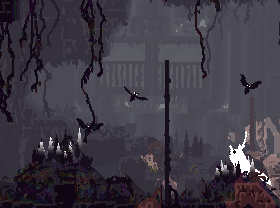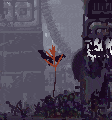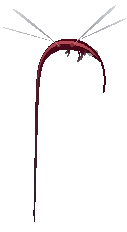
In the world of Rain World, one of the largest families is that of insects. Spiders and Centipedes are some of the largest groups. On the other hand, there are other individuals that do not have such a clear family but are still considered Bugs.
Creatures found throughout all regions, playing a low role in the food chain but essential to the entire Rain World ecosystem.
Squidcadas are neutral, insectoid creatures that are commonly found in large groups across many regions.
The Squidcada is similar in size to Slugcat and has a shiny, oblong body, a pair of eyes, 2 pairs of thin, semi-translucent wings, and numerous squid-like arms around their face. Their body can be either white or black. White Squidcadas have black eyes with blue pupils, while Black Squidcadas have blue eyes with black pupils. Both varieties have a patch of blue coloration where the head meets the body.
Squidcadas can be held with both hands to significantly increase Slugcat's jump height and distance. However, Squidcadas grow exhausted with continued movement and need to stop flying to rest. When this happens, Slugcat must stay still in order for them to wake up. Squidcadas wake faster if released. Black Squidcadas have less stamina, making White Squidcadas a better choice for crossing large gaps.
Their behavior towards ![]() Slugcat is generally harmless, though they may attempt to headbutt. When they do this, the Squidcada pauses midair, flutters their wings, and darts in a straight line toward wherever they were aiming. This behavior is not lethal in and of itself, but can be an annoyance or knock Slugcat into dangerous situations.
Slugcat is generally harmless, though they may attempt to headbutt. When they do this, the Squidcada pauses midair, flutters their wings, and darts in a straight line toward wherever they were aiming. This behavior is not lethal in and of itself, but can be an annoyance or knock Slugcat into dangerous situations.
Squidcadas hunt Batflies, Leeches, and ![]() Infant Centipedes. They catch Leeches by diving into the water and trying to grab a single Leech. This can sometimes result in multiple Leeches latching onto a Squidcada, causing them to drown. They may also catch Leeches that are attached to another creature.
Infant Centipedes. They catch Leeches by diving into the water and trying to grab a single Leech. This can sometimes result in multiple Leeches latching onto a Squidcada, causing them to drown. They may also catch Leeches that are attached to another creature.
Squidcadas can eat Infant Noodleflies if one is given to them by Slugcat, but they do not actively hunt them.
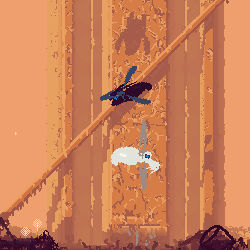
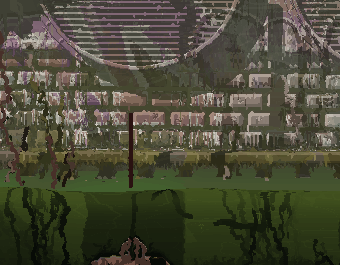
Adult Noodleflies, frequently nicknamed Noots or Noodles, are neutral creatures often seen flying around with multiple Infant Noodleflies hanging onto them.
Adult Noodleflies have long, flexible bodies, 4 slim wings, 2 oval eyes, short legs, and a proboscis-like mouth. In their mouth is a retractable needle which they extend when attacking. The needle is initially white at the tip and a pale red near the mouth and turns black shortly after being exposed to the air. Their bodies are mostly monochrome, featuring a lighter stripe of color in the middle and slight gradients on the legs. Their wings are usually shades of white or gray, though they may have a vibrantly-colored gradient close to the body.
Adult Noodleflies are frail and can be killed in a single ![]() Spear hit. However, they are fierce and agile, making up for their low health with high mobility, which makes it difficult to hit them from a distance. They utilize two attacks in combat: the poke, a quick, close-range, temporarily-stunning jab, and the stab, a lethal, long-range lunge with a well-telegraphed wind-up. If dodged, the stab can lodge the Noodlefly into a wall or floor, trapping them for around 3-4 seconds and leaving them vulnerable to attack. Making contact with the tip of the needle may stun Slugcat and cause them to drop held objects.
Spear hit. However, they are fierce and agile, making up for their low health with high mobility, which makes it difficult to hit them from a distance. They utilize two attacks in combat: the poke, a quick, close-range, temporarily-stunning jab, and the stab, a lethal, long-range lunge with a well-telegraphed wind-up. If dodged, the stab can lodge the Noodlefly into a wall or floor, trapping them for around 3-4 seconds and leaving them vulnerable to attack. Making contact with the tip of the needle may stun Slugcat and cause them to drop held objects.
Hiding in pipes or tunnels is an effective evasion strategy, as Adult Noodleflies are unable to attack while in one. They may still try to attack from outside one, however. Alternatively, the player may attempt to get very close (practically touching them), as doing so makes the Noodlefly unable to attack, and may even cause them to fully retract the needle for a short amount of time.
Adult Noodleflies can swiftly dodge thrown objects such as Spears and ![]() Rocks. This has a very short cooldown, rendering them near impossible to hit in flight.
Rocks. This has a very short cooldown, rendering them near impossible to hit in flight.
If an Adult Noodlefly perceives another creature as a threat to them or their offspring, they become aggressive and begin hunting down the offending creature. Holding a ![]() Noodlefly Egg aggravates Adult Noodleflies until the Noodlefly Egg is dropped.
Noodlefly Egg aggravates Adult Noodleflies until the Noodlefly Egg is dropped.
Within the game's code, a value called tempLike determines a creature's relationship with an Adult Noodlefly. This number slowly increases over time, but certain actions lower it. If it falls below -0.25, the Adult Noodlefly becomes hostile until the value rises back above this threshold. Being the closest to an injured Infant Noodlefly instantly sets this value to -1, the lowest possible, meaning an Adult Noodlefly can often stay aggravated for an entire cycle if they were angered this way. Attempting to throw weapons at a Noodlefly or hitting them with a Rock also decreases this value. In practice, this means that missing 50 throws with Rocks, 12 throws with a Spear, or hitting one 16 times with a Rock turns them hostile for a short period of time.

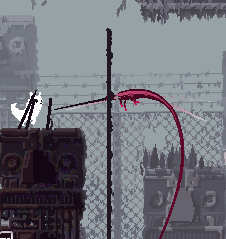
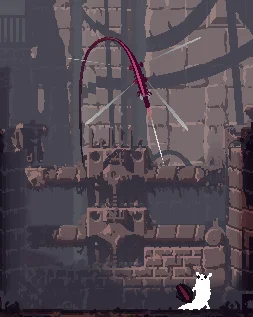
Dropwigs are ambush predators that hide on ceilings and drop down on their prey from above. They are agile and capable of giving chase for short periods of time. Dropwigs are significantly more prevalent when playing as ![]() Hunter, and completely absent as
Hunter, and completely absent as ![]() Monk.
Monk.
Dropwigs resemble large earwigs. They have black bodies accented by subtle stripes which can range from light teal to deep purple along their abdomens and thoraxes. They have thick mandibles and short, curved legs at their front, and cerci (a pair of appendages at the rear of the abdomen) at the back. Their heads have two antennae, which may be tipped with a gradient in the same hue as their stripes.
Depending on the Dropwig`s diet, it will grant more or less food to the creature that eats it. For example if the Dropwig ate a Squidcada it will grant 2 extra food pips instead of the regular 3 that grants by itself
A single ![]() Spear hit is enough to kill a Dropwig. If room geometry permits, a Dropwig may be killed with little risk by throwing a Spear at their perch on the ceiling. Otherwise, Sliding or backflipping can be used to bait out their drop attack, giving an opportunity to immediately retaliate with a Spear.
Spear hit is enough to kill a Dropwig. If room geometry permits, a Dropwig may be killed with little risk by throwing a Spear at their perch on the ceiling. Otherwise, Sliding or backflipping can be used to bait out their drop attack, giving an opportunity to immediately retaliate with a Spear.
Dropwigs only attack by ambushing and are reliant on their line of sight directly underneath them. Because of this, stealth is quite effective against them as long as extra care is taken to watch for them on ceilings. Unusually placed objects, such as a ![]() Blue Fruit on the ground, can indicate a Dropwig perched above. Once located, the simplest course of action is to find an alternative path around them; if their line of sight is not crossed, they do not attack. In cases where avoiding their line of sight is impossible, other methods such as using
Blue Fruit on the ground, can indicate a Dropwig perched above. Once located, the simplest course of action is to find an alternative path around them; if their line of sight is not crossed, they do not attack. In cases where avoiding their line of sight is impossible, other methods such as using ![]() Hazers to obscure their vision may be used.
Hazers to obscure their vision may be used.
Dropwig graphics are drawn behind foreground objects such as chains and vines, which can obscure them and make them harder to detect.
Ambushing is a behavior that consists of up to four stages: locating a perch, lying in wait, the ambush attack itself and, optionally, pursuit if the ambush attack is unsuccessful.
When a Dropwig enters a room, they look for a suitable spot on the ceiling to perch. While searching for a perch, they often ignore all creatures that do not pose an immediate threat (even prey such as Slugcat).
Once a spot has been found, they curl up on the ceiling and their colors dim to match their environment. In this state, they have a symmetrical profile akin to a downward-reaching claw. They wait until a creature either passes underneath or gets too close to them.
As prey nears their line of sight, they tense up, opening their cerci in preparation for the attack. Once their prey is directly underneath, they drop from the ceiling and attempt to execute one of their two attacks, slashing or grabbing. If the ambush is successful, the Dropwig drags their prey back to their den. Dropwigs are capable of dropping at an angle and often do so should prey linger too close to their line of sight for too long. In this case, their cerci slowly widen the closer they are to attempting the ambush.
After an unsuccessful ambush, they spend ~10 seconds giving chase, periodically leaping at and attempting to slash or grab their prey. If the target is not caught within this time, the Dropwig loses interest and starts looking for another perch. If the prey is caught, the Dropwig takes it to their den. Dropwigs are often aggressive immediately after exiting their den.
Dropwigs are capable of placing bait, typically useful objects or food items, beneath their perch in order to lure prey into an ambush. They may either spawn with this bait or find it and pick it up. Once suitable bait has been acquired, the Dropwig grabs it with their front mandibles and carries it with them until they settle in their ambush spot, after which they drop it beneath them.
| Item Value | Chance |
| |
12% |
| |
3% |
| |
3% |
| |
3% |
| |
1% |
| |
0.5% |
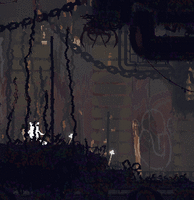
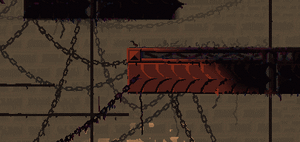
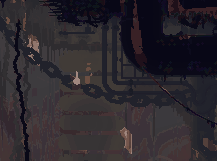
The Eggbug is a skittish, passive creature that is agile and provides a great amount of food when killed. It's called like that due to the nutritious eggs that carry on its back.
Eggbugs are arthropods with 4 legs, 2 long antennae, and 6 detachable ![]() Eggbug Eggs. Their bodies range from dark brown to dark purple, with their antennae lightening in color near the tips. Their eyes and 'eggs' range from blue to green.
Eggbug Eggs. Their bodies range from dark brown to dark purple, with their antennae lightening in color near the tips. Their eyes and 'eggs' range from blue to green.
Eggbugs have very little health and only require 1 Spear to kill, but they are able to dodge thrown weapons and may be hard to hit from a distance. Attacking an Eggbug in close quarters gives them less time to dodge and makes it easier to land a hit.
Eggbugs release 6 Eggbug Eggs on death which fill 1 food pip each, providing 6 food pips in total. Bringing a live Eggbug into a shelter and killing it inside can be particularly useful, as the food is then stored for later use.
Eggbugs are extremely skittish and are afraid of every creature, including other Eggbugs. When in proximity to creatures they are afraid of, they move faster and more erratically as they attempt to escape.
Eggbugs have good vision and are able to see in every direction at all times. They can hear and may twitch or even jump when startled by noises.
Eggbugs attempt to dodge all thrown weapons, such as ![]() Spears and
Spears and ![]() Rocks, by jumping over them.
Rocks, by jumping over them.
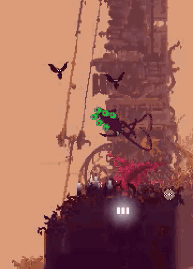
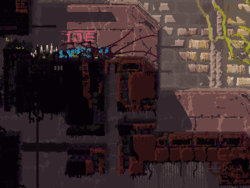
Leeches are small tubular creatures that tend to drown their preys in groups by attaching to them so they are not able to move anymore. There exist 3 variations of Leeches: Red, Blue and Jungle
Red Leeches are the smallest and lightest variety of Leech. 3 or more Red Leeches are typically needed to drown Slugcat. They are commonly found in ![]() Drainage System and
Drainage System and ![]() Garbage Wastes.
Garbage Wastes.
Sea Leaches are long, blue, tubular creatures that wiggle as they move. They are larger than other Leech variants.
They are fast and heavy, and they attack in coordinated swarms, making them adept at hunting and drowning other creatures. Sea Leeches are most commonly found throughout ![]() Shoreline.
Shoreline.
Jungle Leeches are a type of Leech that has the unique ability to survive out of water and drain food pips from Slugcat. They can be found in humid regions such as ![]() Outer Expanse.
Outer Expanse.
Jungle Leeches are small, green, tubular creatures. Aside from their green coloration, they are identical in appearance to Red Leeches.
When idle, Leeches swim through bodies of water aimlessly. When they detect prey, they swim towards them and make short lunges in an attempt to latch on. They are only capable of latching on during a lunge. They are relatively slow and can be outpaced by Slugcat's normal swimming speed, but their weight slows creatures down while they are attached, making them dangerous in large numbers. As with other Leeches, they remain attached for a short time after drowning a creature, then leave to search for new prey.
While outside of water, Leeches gradually 'dry out', visually indicated by their coloration darkening and turning black over time. After some time out of water, they detach from creatures and attempt to return to the nearest body of water. Their mobility on land is limited, and they are only capable of slowly crawling along the ground and clearing 1-tile-high jumps. Their movement slows the longer they are outside of water. If they remain out of water for ~23 seconds, they die. This only applies to Red and Sea Leeches, the Jungle ones need to be removed by other methods such as Snails or ![]() Worm Grass
Worm Grass
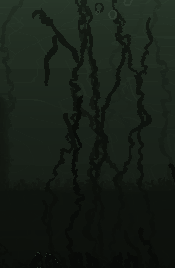
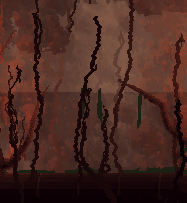
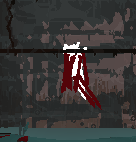
Snails are small, shelled creatures, most often found slowly waddling around watery regions. They are capable of emitting a loud 'pop' that stuns nearby creatures.
Snails are colorful, hard-shelled creatures. They have black bodies with small white eyes and two legs. Their bodies are protected by brightly colored, almond-shaped shells that they are able to retract into for self-defense. They are slightly smaller than ![]() Slugcat.
Slugcat.
Snails can be held and thrown to temporarily stun creatures, giving Slugcat time to escape from predators. This is effective against Leeches; throwing a Snail into a pool of water stuns Leeches in a wide radius, allowing Slugcat to swim past safely. With a well-timed jump, the Snail's pop may also grant a good amount of vertical momentum, allowing Slugcat to reach high places, though this use is fairly niche.
They can be utilized as a distraction, as Slugcat can throw one at one of the Snails' predators, causing them to either catch the Snail and retreat to their den, or sometimes even get trapped in a near endless loop of grabbing the Snail, the Snail popping, the predator getting stunned, the predator attempting to grab the snail again, and so on. This can come in handy for passing dangerous creatures such as ![]() Centipedes and
Centipedes and ![]() Monster Kelp, who often take a long enough time to kill or eat the Snail for the Snail to pop.
Monster Kelp, who often take a long enough time to kill or eat the Snail for the Snail to pop.
Snails are capable of producing a loud pop from within their shells, creating a shock wave which can repel and stun Slugcat and any other similarly sized creatures. There are a few conditions under which Snails may pop:
A Snail's pop radius is proportional to its size. Pops are considerably stronger in water, up to 5.5 times if both the Snail and the creature receiving the shock are submerged.
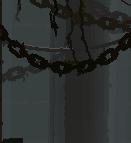
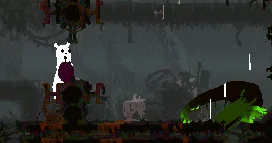

Batflies are passive, flying, insectoid creatures that act as one of ![]() Slugcat's primary food sources. They are one of the most common creatures in the game, appearing in almost every region.
Slugcat's primary food sources. They are one of the most common creatures in the game, appearing in almost every region.
Batflies are small black insects with two wings, antennae, and white eyes. They have no variation.
Batflies can be caught and eaten to fill 1 food pip. Batflies are wary of Slugcat, but are usually slow in their evasion. They can be caught easily by jumping towards them and grabbing. Catching Batflies may be easier from above, as they often stop and hover in place. Jumping from above also makes it easier to catch Batflies through use of the game's Batfly auto-grab feature. ![]() Rocks and
Rocks and ![]() Spears can also be used to kill Batflies from afar.
Spears can also be used to kill Batflies from afar. ![]() Batnip attracts Batflies, which makes them easier to catch. Unlike other food sources, Batflies do not persist in shelters, and are either auto-consumed or deleted.
Batnip attracts Batflies, which makes them easier to catch. Unlike other food sources, Batflies do not persist in shelters, and are either auto-consumed or deleted.
Batflies can be used to distract certain creatures, such as Pole Plants and Monster Kelp. When thrown in range, these threats may prioritize the Batfly over Slugcat, retreating into their dens to consume them. Batflies can also be used to distract ![]() Jetfish and raise reputation with Squidcada.
Jetfish and raise reputation with Squidcada.
Batflies can be found in 'hives' around the world, known in-code as swarm rooms. These rooms feature black, white-tipped plants. Every cycle, Batflies attempt to migrate to a new swarm room. Depending on how many Batflies Slugcat has killed, multiple Batfly hives may be empty. When a hive is empty, the plants lose their white tips. Active Batfly hives are indicated on the map by pulsing blue rings.
The white-tipped plants that Batflies nest in also act as Batfly-exclusive travel pipes. When a threat gets too close to a Batfly, they may dive and burrow into these plants. After a few seconds, they re-emerge from a different plant elsewhere in the room. Batflies can still be grabbed while in their burrowing animation.
Batflies can hang upside down from ceilings, poles, and even each other, forming stacks. If a Batfly with others attached to it from below starts flying, the attached Batflies may not separate, and they can end up struggling to fly. If Slugcat grabs a Batfly attached to a chain, the entire chain is picked up until the other Batflies fly away. This can result in strange physics if the Batflies are still attached to the ceiling.
